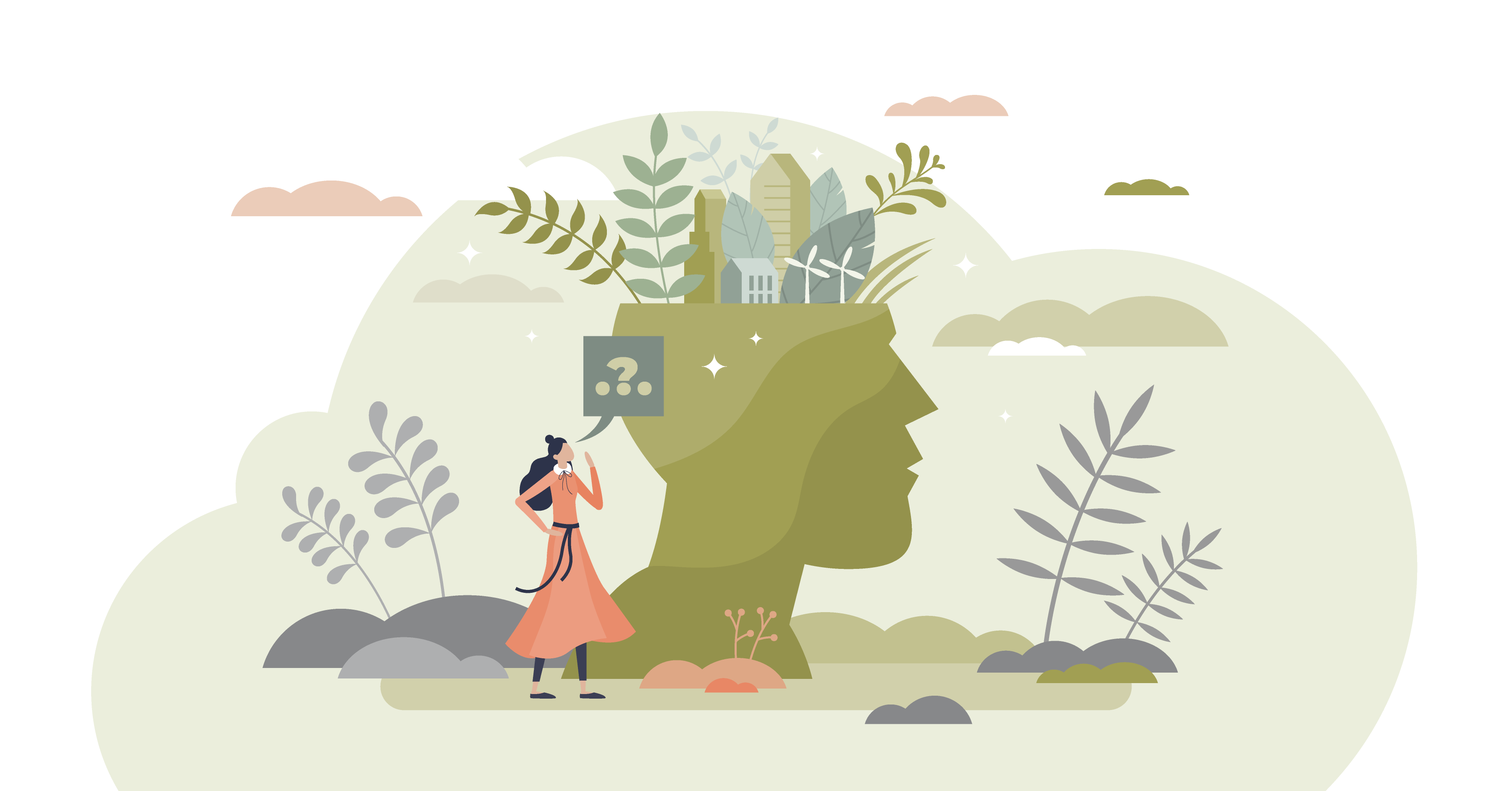Table of Contents
Getting to the writing stage of a project is very exciting but also very daunting at the same time. But fear not, it doesn't have to be the big scary monster you may envisage it being! The writing process can be made a lot easier by breaking it down into 6 individual steps.
Taking part in Income School's Project24 Content Warrior challenge meant that I wrote 60,000 words in just 1 month. It was a pretty epic experience and one in which I was pretty impressed that I completed. One of the big takeaways from the challenge was discovering writing is only one part of the 'writing process'. By realising this and breaking down 'writing' into six parts, I started to find the whole process of writing 60,000 words a whole lot easier and less daunting.
The 6 steps, or stages, of the writing process are:
- Ideating - a 3D mind map of linked ideas going in many directions
- Research - reading, talking about and exploring ideas; copious note-taking
- Outlining - creating a plan, mapping and conversion to a linear structure
- Writing - fleshing out the text with a coherent story and argument
- Editing - converting yourself to a reader of the writing
- Publishing - sharing with someone else either as a draft or the completed piece
Lets look at these in more detail. Plus I'll give suggestions of the type of tools to make the step easier. If you find visual diagrams easier, here's a visual representation:

Ideating builds ideas
Ideating can be one of the most fun steps. This step releases your mind to freely create and come up with a wonderful mind map or multiple lists of ideas. Some may be related and appropriate to what you are working on. Others may be less so and best saved for another time.
The important thing is not to confine yourself to a linear structure at this stage. My ideas come out as multiple lists and then I combine these lists into a single system. This system is not constrained by the form these ideas may take.
Your ideas must be allowed to grow and proliferate in many directions. For this reason, mind mapping programs can be useful. As can post-it notes and the like. I would personally recommend pen and paper, but I also use Heptabase and Scrintal, plus the Canvas and Project plugins in Obsidian.
These approaches allow you to move things around, see what resonates, what's interesting, what could be relevant and what will need further ideation. Ultimately the aim of this step is to get what is in your head written down somewhere, in one place.
Then you have the seed onto which you can start growing the next step, which is Research.
Research investigates ideas
The Research step is about taking your ideas and building on them further. It's about identifying what is already out there, or more importantly, what is not or what is controversial. Research is about starting to identify threads or themes which run through your ideas and connects them together.
As a student, research is what we are training to do best. You'll need to identify trustworthy sources, or undertake your own research in order to support, or answer, your ideas from the previous step.
Research can be broken down into further parts and it largely depends on what stage you are at, what you are writing and your subject area. Anything that helps you to contextualise, understand and start to form a direction around your work I am calling research. Research can therefore include:
- reading of primary and secondary literature
- identifying opinions and conversational divides
- talking to others both within and out with your field
- experiments and surveys
Taking copious notes of your thoughts and opinions as you go is central to research. If you read a paper, take your own notes on that paper. Not notes in the margins, but a coherent set of bullet points or sentences that explain your thoughts. Describe major take home messages, useful points for consideration later, and where it wasn't so strong. Ideally, add a little note connecting it to some similar research you've read elsewhere.
Write wherever is most convenient to you but keep all your notes together in one place. I fell foul of this when I first started, so now I have notes in many places; Word documents, Overleaf, notebooks and paper margins. I still haven't brought them all together, but now I only store new notes in Obsidian.
Software where I can link between notes is essential. I can connect ideas and start to thread through arguments in the different things I've read. Remember research also includes your own personal research, such as experiments and data analysis. This will be the meat of a science-based project.
Again, the aim here is not to write linearly, only to start to identify a linear structure within your notes. Is there a story here?
Outlining structures ideas
In a way, outlining is one of the most challenging steps. However, done well, it makes the next stage, Writing, much easier. Outlining takes a 3D structural mass of research and ideas, and makes it linear.
Once you have done your research you should have a much better idea of how things fit together. As such you should have started to identify potential threads which you can write about.
Creating the framework or structure around which you are to write is one of the key parts to help you keep focus and direction in your writing.
For my literature review I visually mapped out the structure and sections in Scrintal. Then I create bulleted points within each section to make sure I have all the main points. It doesn't take too long to create this structure if your research was done effectively. Don't worry if you still have holes in your structure; fill major ones in by doing some more research. Otherwise leave them for now.
I find that creating one bullet point per paragraph is an effective way to break down the structure. Each paragraph should only have one point to make anyway and this helps ensure this is the case.
Copy and paste your outline structure as headings for each paragraph as you start the writing then delete them afterwards if needed. This is where experience blogging can help, because each paragraph of writing pretty much has its own heading.
If you find yourself expanding on the original point too much, it is a sign you need to split the writing into two paragraphs. And this is where the fun starts; Writing.
Writing creates a story
Writing is the step where we choose the words and create the sentences that make up the story. We're not striving for perfection here, instead, a logical flow of thought, ideas and reasoning which convey your message.
It is also the hardest bit to do, if the previous steps have not been completed properly. If I try to start writing to early, I end up with multiple problems. If you are really struggling with writing, it is likely that this is the case for you too.
The first is that my writing speed is very slow. I don't know what I'm supposed to be writing about because I haven't identified the story I want to tell. I might be trying to ideate, research, outline and write all the same time. Well, we all know multi-tasking is a recipe for disaster!
Therein comes the second problem. Anything that I do write has very poor structure and flow. Essentially I'm just wondering about a topic aimlessly without knowing what the key point and arguments are. I don't know the theme I want to thread through my paragraphs, nor whether a point should be made near the beginning or nearer the end. If I have not outlined properly, then my writing is much more likely to go off on tangents.
The third problem is forcing writing too early makes the editing process much more challenging. Although I may eventually use the writing elsewhere I can't identify who it is I'm editing for. How can a reader understand the text if the writer does not know what they are trying to say?
That being said, writing can be where the magic happens. Its the step best done uninterrupted. Apart from Editing, I find the other steps easier to dip in and out of. For writing, I need several hours of uninterrupted me time to hone in and focus.
If you want to do good, coherent writing, really try to protect the time that you do it, making sure the environment is right for you and you have everything you need; including going to the bathroom before hand!! I usually put on some gentle instrumental piano music, have a glass of water or a cup of coffee in a quiet space and I just try to write as fast and efficiently as I can. As mentioned earlier I'm not aiming for perfection, I'm aiming for a story to unfold that will excite the person reading it.
The other point to make with writing, and one that I have found hard to break, is to limit editing as you go. As much as possible do not try to edit as you go. It's more important to get everything down on the screen/paper and worry about the exact word use later.
Also try not to worry about writing in order. If you find yourself having the urge to write in a different, but closely related paragraph for a while, go for it. As you write you may suddenly have an epiphany about something. Maybe make a new note or document and fire away, making sure to come back from where you left off.
If the writing is particularly challenging, don't feel the need to rush. One of the ways I have learnt to write faster is to try to push aside the feeling of frustration of slow writing. I do this by forcing myself to write slow. Sounds counterintuitive but it can work.
Just try to get some words down on the page, or even just try to pad out the bullet points you made when you created a structure. Often, I break down the bullet points into sub-bullets, add in key papers as a list and expand from there.
Because the process has become linear, any text writing software is good to use. We want to be able to constrain ourselves to a logical structure now.
Editing fine-tunes the story
Editing can be one of the most rewarding, but also one of the most daunting steps. Chances are you'll have a large piece of writing with a story which is yet to fully make sense.
Editing is where we act as a reader and it requires a different frame of mind than when in the writing stage. I'd also recommend a time gap in between writing and editing; a fresh pair of eyes if you will. I break down editing into several parts:
- First edit -> Does it conform to the structure and order I need? What is not needed? What is missing?
- Second edit -> Is the word use appropriate? Can I use less words to say the same thing? How many 'that's can I remove?! Is it active or passive voice?
- Third edit -> Does it all make sense? Is it useful and interesting to the intended reader?
- Any subsequent edits -> Is it the best I can do? Does it answer the question I presented?
For longer documents, I often print everything out, get out a coloured pen and sit in a comfy chair to have a thorough first pass through the piece of writing in its entirety. I don't tend to read at the computer screen if I can avoid it, so why should I edit my writing on the computer screen? Get into reader mode.
Editing is surprisingly time-consuming and will probably take longer than the Writing. If I'm really struggling with this step, I quite often go back to the Outlining stage first. I'll ask myself; does the outline have all the points I want to make? And does the writing expand on just these points? Am I missing a key point?
The most common problems for me are that I have gone off on a tangent somewhere or there's a disconnect between two consecutive points. You may find there are holes you need to go back and fill. It may be that you need to go back to the research stage to gather some new intel on a missing argument.
Once you've done your final edits though, the most exciting stage comes next. The stage where someone else gets to read your work; Publishing.
Publishing gets your story out there
Publishing includes anything that goes out with your own system and therefore out with your own control for the time being. So I would include here sending it to supervisors or editors for revision and comments as well as the actual submission to a research journal or publisher.
Publishing is probably one of the most exciting steps, but also one of the most nerve-wracking. It's likely that you will need to revisit each of the previous steps after 'publishing'. Hopefully research and writing are minimal and it's just some editing required, or maybe a little change in structure. At some point the writing will be all finished and it will reach its final form.
Final thoughts on the 6 stages of the writing process
When you say you sit down to write, where do you start in this process? If you are really struggling with 'writing' then it's most likely that you have tried to bypass, knowingly or unknowingly, certain parts of the 'writing process'. Breaking writing down into six parts can help break down the big scary writing monster into the friendly little monsters it can be.
The other great thing as seeing writing composed of these six steps, is that you will never start with a blank page. Plus, different tools and techniques work better with each stage, so don't just head straight to a text editor like Word or LaTeX. Find your own system and apps to optimise how you work; visually, audibly, etc.
It is also important to realise that this process is not necessarily linear. You may need to jump around, go back to a stage or repeat a stage. I also quite often do some research, then have ideas, create a rough structure, then do more research before forming a more concrete structure.
Also, reading outside your area of research is actually as important as reading within it. Getting ideas of pieces that you like, authors whom you can relate to and enjoy reading can really help your own writing style later on. During my 30 day writing challenge, one of the things I missed the most was reading. Because I was so busy writing, I didn't have as much time as I would have liked to read. Reading is a fascinating part of the writing process and as essential to it, as sharing your final work with others. In a way it completes the circle.
I hope you have enjoyed this insight into how I see the writing process. If you found it useful why not subscribe to my newsletter to keep updated with inspiration.









Comments